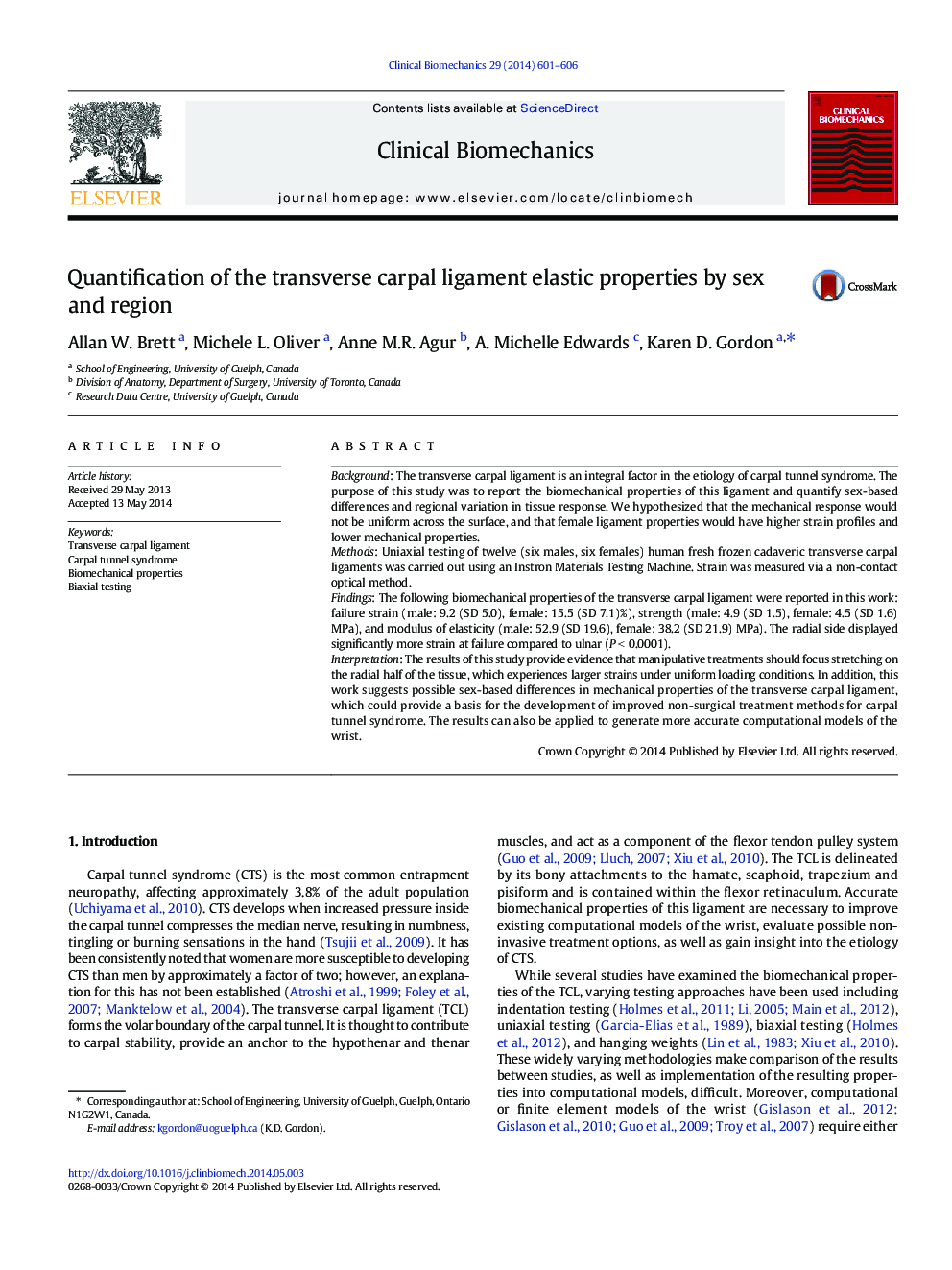| Article ID | Journal | Published Year | Pages | File Type |
|---|---|---|---|---|
| 4050427 | Clinical Biomechanics | 2014 | 6 Pages |
•Mechanical properties of the human transverse carpal ligament are reported.•Load was applied in the radial-ulnar direction.•Failure strain was higher in the radial compared to ulnar side of the ligament.
BackgroundThe transverse carpal ligament is an integral factor in the etiology of carpal tunnel syndrome. The purpose of this study was to report the biomechanical properties of this ligament and quantify sex-based differences and regional variation in tissue response. We hypothesized that the mechanical response would not be uniform across the surface, and that female ligament properties would have higher strain profiles and lower mechanical properties.MethodsUniaxial testing of twelve (six males, six females) human fresh frozen cadaveric transverse carpal ligaments was carried out using an Instron Materials Testing Machine. Strain was measured via a non-contact optical method.FindingsThe following biomechanical properties of the transverse carpal ligament were reported in this work: failure strain (male: 9.2 (SD 5.0), female: 15.5 (SD 7.1)%), strength (male: 4.9 (SD 1.5), female: 4.5 (SD 1.6) MPa), and modulus of elasticity (male: 52.9 (SD 19.6), female: 38.2 (SD 21.9) MPa). The radial side displayed significantly more strain at failure compared to ulnar (P < 0.0001).InterpretationThe results of this study provide evidence that manipulative treatments should focus stretching on the radial half of the tissue, which experiences larger strains under uniform loading conditions. In addition, this work suggests possible sex-based differences in mechanical properties of the transverse carpal ligament, which could provide a basis for the development of improved non-surgical treatment methods for carpal tunnel syndrome. The results can also be applied to generate more accurate computational models of the wrist.
